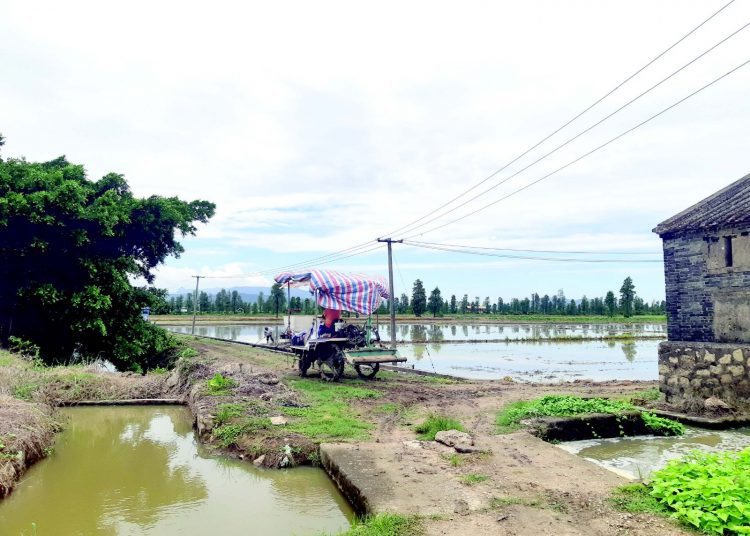On the way to Taishan China Agricultural Park, one can enjoy the taste and the beauty of China’s rural deep traditions. During my recent visit to the park, which covers the five towns of Duhu, Doushan, Chixi, Guanghai, and Duanfen, with a total area of 800 square kilometres and a cultivated land area of about 146 square kilometres, I was also introduced to some of China’s significant agricultural
advancements that were developed over the years. After listening to some of China’s success stories in increasing production, deploying modern techniques, developing hybrid
rice, efficient water management, or adaption to climate change consequences, a burning question haunted me: Why don’t we have a suitable co-operation framework that allows Egypt and China to exchange experiences and expertise in this vital sector.
It may be one of my wishes to come true quickly. Only two weeks after the visit, Egypt and China signed an agreement to cooperate on developing drought and salt-tolerant crops to overcome water scarcity and
salinity in Egypt as the country confronts the major impacts of climate change.
The deal, which was signed by Minister of Agriculture and Land Reclamation el-Sayed
el-Qoseir and his Chinese counterpart Tang Renjian, is part of a three-year action plan for agricultural co-operation (2023-2025) between the two countries.
The plan includes boosting dialogue and exchanging expertise on agricultural innovation, including modern water-guided technologies, organic and biodynamic farming, and combating pests and plant diseases using environmentally-friendly biopesticides.
The visit to China Taishan Agricultural Park can give you good a clue about the prospects
of this co-operation between the two countries. There, you can be surprised by the number of similarities in traditions, needs,
and the desire to celebrate their agricultural heritage while overcoming different environmental and increasing demand challenges.
The park is a picturesque destination offering visitors a unique and immersive experience in the world of agriculture. Upon arrival, you are greeted by stunning landscapes decorated with lush green fields, fruit orchards, and vibrant flowers. The park is designed to resemble a traditional Chinese farming village, showcasing the rich agricultural heritage of the region.
An agricultural culture exhibition hall and a theme museum comprehensively display and carry forward China’s farming culture, history, and physical objects, while an adjacent exhibition introduces you to some of the modern Chinese agricultural wonders including giant vegetables, high-yield crop varieties, hybrid rice, and rice cultivated in salty land.
Chatting with experts at Taishan Park will leave you with a clear vision of China’s journey to transitioning its agriculture into one that
is sustainable, putting food security as an ultimate
priority, and China’s keenness to build a community with a shared future for mankind.
Hence, China has the commitment to share and achieve win-win development co-operation with other countries of the world.
China’s journey to transitioning its agricultural
system into one that is sustainable was
really quick thanks to a strong policy steer and the deployment of all its science, innovation,
and hi-tech technological capabilities. China has stopped at nothing to achieve sustainability in the agricultural sector even with deploying space science and technology.
Science and technology for example have been key to China’s miracle in reclaiming
and managing saline-alkali land, an experience that can provide valuable insights for
other countries. Chinese scientists have achieved another record in the production of salt-tolerant rice, an essential move for countries striving to ensure food security. Today China has succeeded
in producing one-fourth of the world’s grain and feeding one-fifth of the world’s population
with less than 10 per cent of the world’s arable land, which is a great achievement in pursuit of food and nutrition security not only in China but also in the world. Currently, China ranks first in the world in terms of the production of cereals, cotton, fruit, vegetables, meat, poultry, eggs, and fishery products.
While the top priority for China is food security, it also attaches great importance to
‘sustainability’ and ensuring long-term food system productivity and resilience.
They succeeded in building an effective management of environmental pollution and
one of their ways towards sustainability is ‘doing more with less’, whether it’s using
less land, water, or energy. Another key factor in building sustainability is pursuing climate objectives more deliberately and seeking
climate adaptation. Amid global crises, including the Russian-Ukrainian crisis and the increasing threats
against world food security, there is a growing need to benefit from all successful
endeavors in this field. For Egypt and China, there is great room to co-operate and exchange experiences and knowledge that we hope to reap fruits in the near future.






Discussion about this post